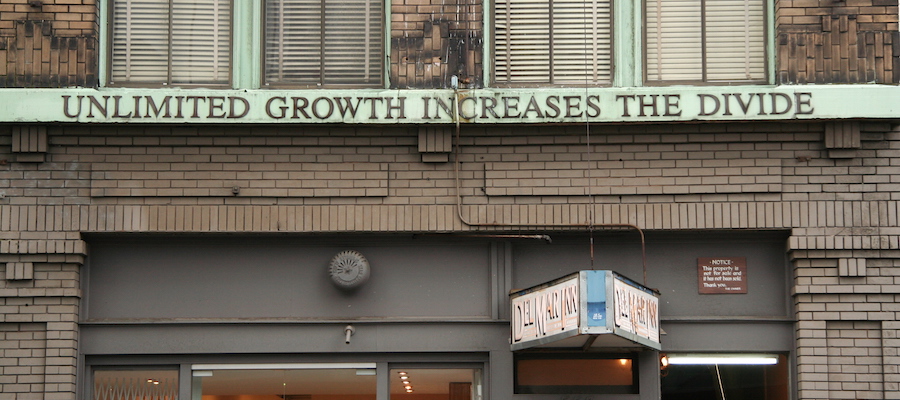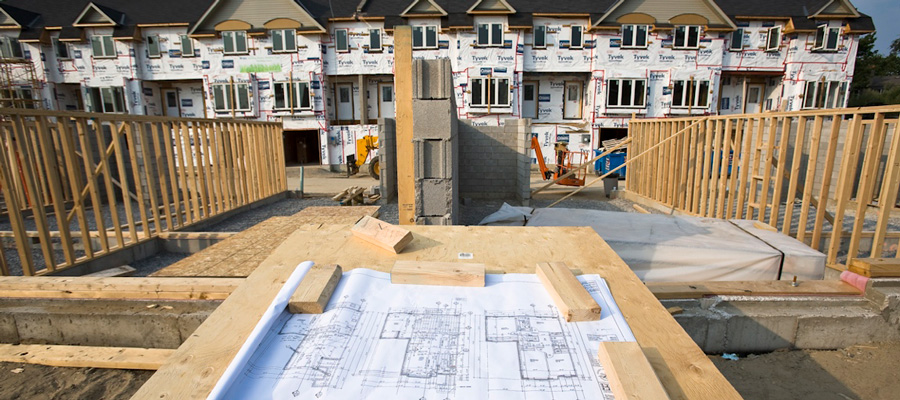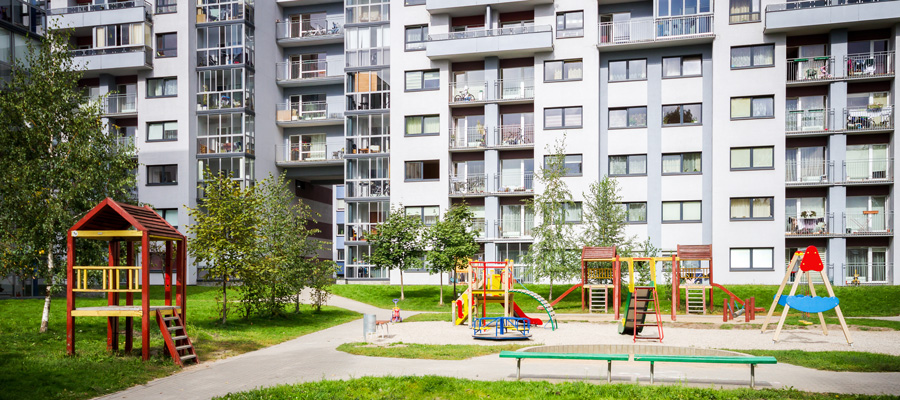Taking stock of BC’s new (affordable?) housing policies

In 2016, the BC government set out several new actions intended to address housing affordability. But as 2017 begins, Metro Vancouver continues to have a massive problem – in both home ownership affordability and rental markets. This threatens to undermine the region’s long-term prosperity by driving out young people and making it harder to attract people to the region.
The biggest news of 2016, and the most laudable, was the surprise announcement of a 15% property transfer tax (PTT) for foreign purchases of homes in Metro Vancouver. Emulating policy in Singapore and Hong Kong, the new tax represented a major reversal for a BC government that had long been dismissive of concerns about external capital flows inflating Vancouver real estate. The July 25 announcement sparked a rush to close deals by the August 2 deadline, and the government was (rightly) criticized for not grandfathering in already-signed deals that happened to close past the deadline.
The early evidence shows that the property transfer tax has significantly cooled foreign purchases.
Nonetheless, the early evidence shows that the tax has significantly cooled foreign purchases. Between June 10 (when BC first began collecting citizenship data on home purchases) and July 15, there was an average of 27 Metro Vancouver homes, valued at more than $25 million, purchased by foreign investors every day. By September and October foreign purchases fell to an average of four homes purchased by foreign buyers ($3 million invested) per day. In dollar terms, this is an 88% decline.
In terms of revenues, the foreign buyer tax raised $24.6 million in its first three months. The Ministry of Finance’s first quarterly report estimated the new tax would raise $255 million on an annualized basis. So it seems that the new tax has had a bigger impact on foreign buyers than intended.
A contributing measure may be a more progressive property transfer tax overall. Budget 2016 added a third tier of 3% on value above $2 million. This somewhat follows the UK, where a steeply progressive PTT has helped cool the London market.
In terms of impact, stats from the Real Estate Board of Greater Vancouver show that by Fall 2016 total home sales were almost 40% lower compared to a year earlier. Some caution here is needed, however, in that the volume of home sales had already started to drop relative to 2015 levels before the foreign buyer tax was announced.
Home price inflation has now paused; technically there were some small drops in price in recent months, but not enough to make much of a dent compared to gains made going back a full year. For example, in December 2016 a single-family home fell by 5% compared to six months earlier, but is still up 19% compared to 12 months earlier.
Prices certainly have not dropped back to anything close to “affordable,” but there is good reason to believe that housing prices peaked last summer. Provincial data show that foreign buyers had been putting substantial sums into the market. In the immediate period before the foreign buyers tax came in (June 10 to Aug 1) some $2.3 billion in real estate purchases by foreign buyers took place – a staggering amount. The demand side is also weakened by BC households holding record amounts of debt relative to income.
The new program for first-time buyers points to a shift in the government’s mindset: having made some modest moves to cool the market, they now seek to boost the housing market before the May election.
This leads to the new and more problematic BC government program of interest-free loans for five years to first-time buyers, with the loan repaid (with interest) over the following twenty. This is recognized as a “second mortgage” with a maximum loan of $37,500. At that maximum and at standard mortgage rates this works out to a subsidy of $1,000 to $1,500 per year for the five years.
The new program was widely panned by economists when announced in December for the same reasons it won praise from developers and the construction industry: it artificially boosts the market by encouraging new buyers to take on increased household debt. This points to a shift in the government’s mindset: having made some modest moves to cool the market, they now seek to boost the housing market before the May election, and it piles on to existing efforts that exempt the property transfer tax for first-time buyers and for newly constructed homes (the latter announced in Budget 2016).
The interest-free loan program is also contrary to federal efforts announced in October 2016 aimed at preventing households from taking on larger mortgages than they can afford, by requiring banks to perform stress tests before issuing a mortgage. The federal government and the Bank of Canada have been concerned about overheated real estate markets in Vancouver and Toronto for some time, with the potential for a correction to destabilize the financial system.
What about the rental market?
Much of the media attention focuses on the home ownership market. But housing affordability policies must also address the challenges facing renters (one-third of Metro Vancouver households) in a very tight market. Some municipal governments, the City of Vancouver in particular, have created incentives for the construction of new rental apartments. However, according to the BC Non-Profit Housing Association, a growing population means Metro Vancouver needs much more – about 5,000 new units every year just to keep pace. More again if we are to address growing needs for seniors’ housing or to address homelessness in a meaningful way.
To really address affordability Vancouver needs a steady build-out of dedicated affordable housing, not one-time only initiatives in an election year.
A modest amount of new social housing was announced in the BC Budget, $355 million (from land sales of existing properties to non-profit societies) to build 2,000 units. In September an additional $500 million from surging PTT revenues will support 2,900 units. These announcements require some auditing, as projects include repurposing and renovations in addition to new stock. The new units are spread across all of BC, not just in Metro Vancouver where the crisis is most acute.
These one-off housing investments are important, but to really address affordability Vancouver needs a steady build-out of dedicated affordable housing, not one-time only initiatives in an election year. To get to something like 5-10,000 new units per year, BC needs senior governments to step in with the express purpose of building new affordable housing stock. The upfront capital investment is the key missing ingredient because costs get repaid in rent over time.
The federal government will help this effort, with the 2016 federal budget and Fall Economic Statement together committing to support a range of housing investments. Based on the information available and BC’s population share, I estimate this amounts to approximately $300 million in 2016/17 and 2017/18 combined, and another $1.9 billion over the following decade for BC. The federal government is in the midst of developing a national housing strategy, but it is not clear whether the feds will commit additional funds for new affordable (social and co-op) housing stock beyond what has already been announced.
The BC government also changed legislation to allow the City of Vancouver’s request to levy an empty homes tax to boost the amount of rental properties. This new tax comes into effect this year at a rate of 1% of assessed value. A study for the City last year estimated 10,800 empty homes (for more than one year), of which 90% were apartments/condos. The city estimates between 1,500 and 4,200 units will be brought into the rental market as a result of the tax. In addition, the city’s new policy on Airbnb and other short-term rentals may help keep more units in the market as long-term rentals.
What’s next?
It is good news that governments and political parties are locking on to housing affordability as a central public policy issue, and are exploring a range of tools. But efforts to date have been inadequate, and are not likely to lead to broad-based affordability in either the rental or ownership markets. The lesson of recent years is that we need a more rational planning and management of the housing market in the interests of local people.
My “big bang” framework for affordable housing has five planks, focused on actions for the BC government (May 2016 report here):
- Substantial new public investments to develop new affordable housing;
- Protecting and reinvesting in existing affordable housing, including energy efficiency retrofits and upgrades;
- Inclusionary housing in the development of more dense, complete communities;
- Putting the brakes on external capital; and
- Making property taxes fair, including reforming the home owner grant.
In most of these areas we saw progress in 2016, but the report points out that there is much more the BC government can and should do to support affordable housing. The coming BC budget and pre-election period provide a new opportunity for the BC government (and all political parties) to up their game on affordability.
Topics: Housing & homelessness, Provincial budget & finance, Taxes



